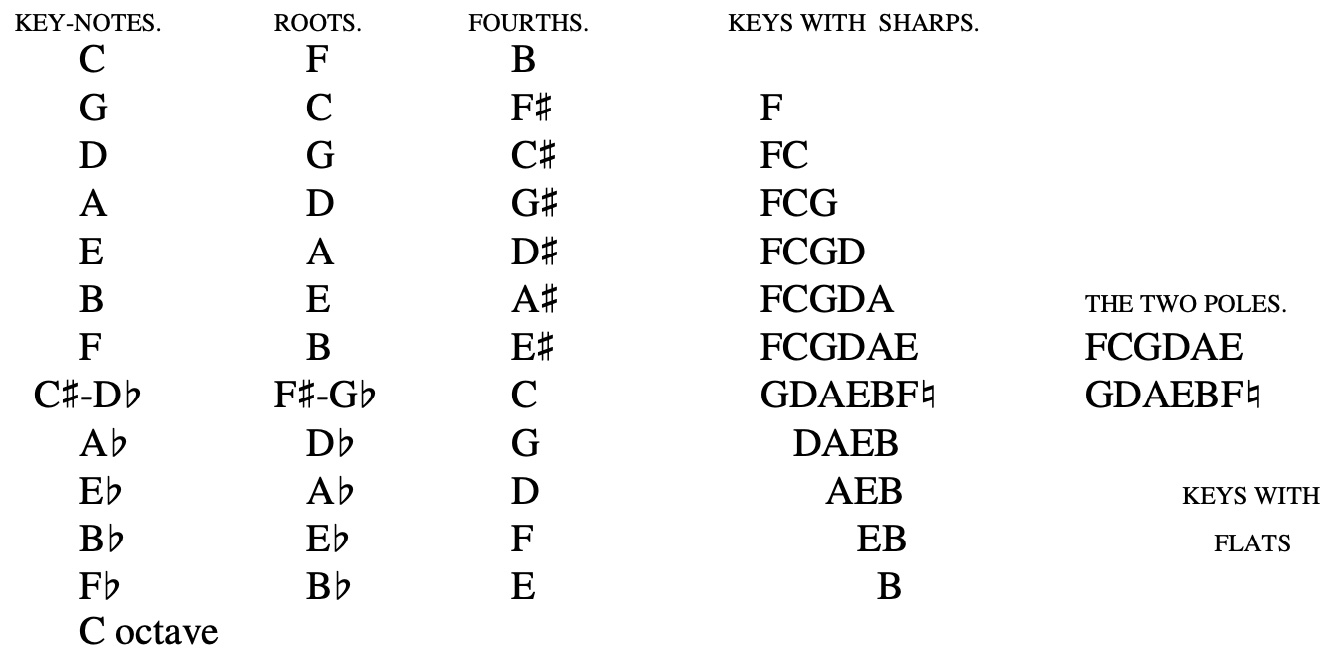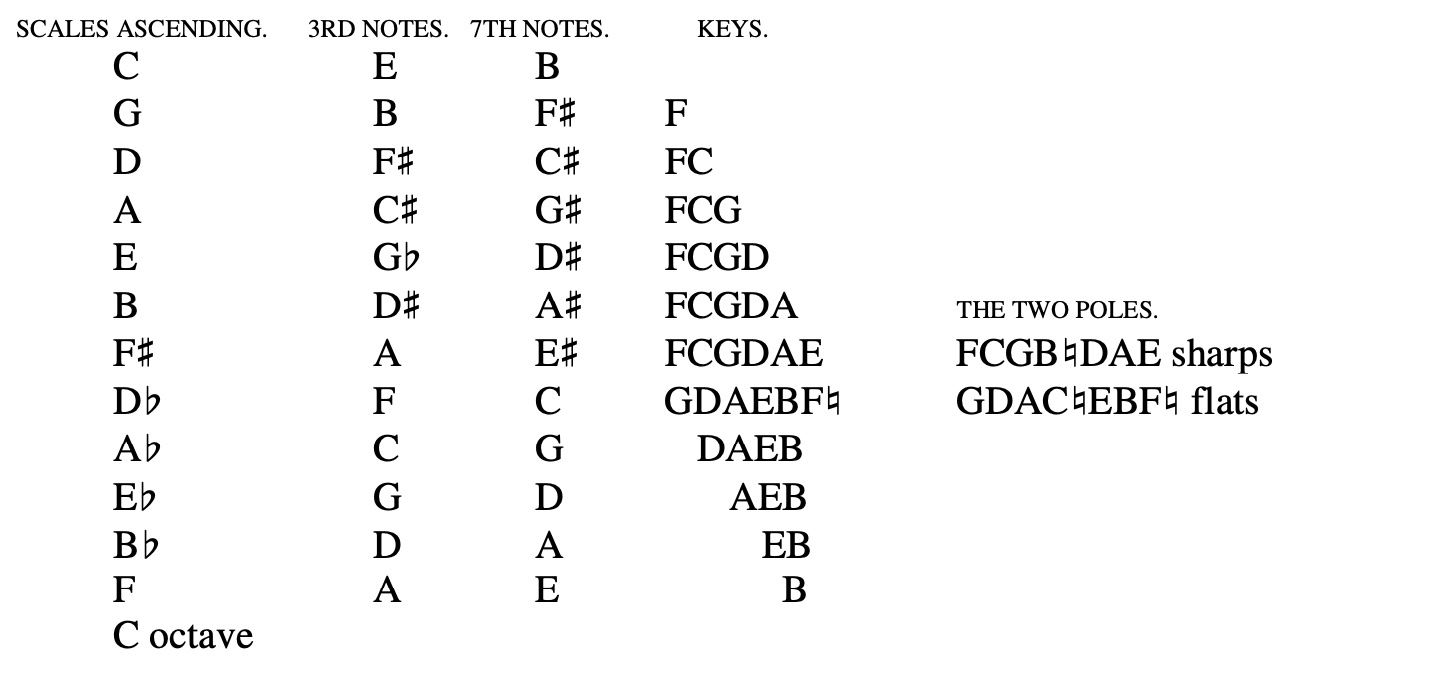Hughes
The key-note C sounding from within itself its six tones to and fro in trinities, the tones written as notes in musical clef
—The trinities hereafter termed primaries and secondaries
—The seven of each of the twelve key notes developing their tones
—The order in which the tones meet, avoiding consecutive fifths
—Dissonance is not opposition or separation
—The use of the chasms and double tones is seen
—The isolated fourths sound the twelve notes
—Each double tone developes only one perfect major harmony, with the exception of F#-G?; F# as the key-tone sounds F? as E#, and G? as the key-tone sounds B? as C?
—The primaries of the twelve key-notes are shown to sound the same tones as the secondaries of each third harmony below, but in a different order
—All harmonies are linked into each other, . 23 [Harmonies of Tones and Colours, Table of Contents2 - Harmonies]
whether veering round, or advancing and retreating in musical clef. I next tried the major keys which develope flats, and I thought that G? would develope a perfect harmony, but found that it must be F#, and that in this one harmony E# must be used in place of F?; on reference, I found that thus the twelve keys developed correctly in succession, the thirteenth being the octave, or first of a higher series. [Harmonies of Tones and Colours, Dr. Gauntletts Remarks1, page 13]
We here trace the twelve harmonies developing in succession. Notice how exactly they all agree in their mode of development; also the use of the chasms between E and F, B and C. Remark also the beautiful results from the working of the double tones, especially C#-D?, and E#-F?, causing the seven tones of each harmony, when ascending, to rise one tone, and, descending, to reverse this movement. F#-G? is the only double tone which acts as F# when a key-tone, and G? when the root of D?. The root of each harmony is the sixth and highest tone in each succeeding harmony, rising one octave; when it is a double tone, it sounds according to the necessity of the harmony. The intermediate tones are here coloured, showing gradual modulation. The isolated fourths (sounding sevenths) were the previously developed key-tones; these also alter when they are double tones, according to the necessity of the harmony. Beginning with B, the isolated fourth in the harmony of C, the tones sound the twelve notes of a keyed instrument, E# being F?, and the double tones, some flats, some sharps. [Harmonies of Tones and Colours, Combinations of dissonance, rests, page 24]
The only exception is the double tone F#-G?, which is a curious study. F# as a harmony takes the double tones as sharps, and F? is E#. G? is also a harmony sounding the same tones, by taking the double tones as flats, and B? as C?. F# therefore takes the imperfect tone of E#, and G? the imperfect tone of C?. (See here the harmony of G? in musical clef.) [Harmonies of Tones and Colours, Combinations of dissonance, rests, page 24]
The Minor Gamut modulating in the meeting of fifths through seven octaves. We may here trace the twelve, each fifth note becoming the higher key-note. But the sixth and seventh notes of the scale are discords. For example, in the key of A, the sixth note, F?, is a discord with the second note, B?; and the seventh note cannot be sounded as G# falling into the eighth, without being a discord with the third note, C?. No octave can be sounded in the Minor Scale, as it has risen into the fifth higher key of E. [Harmonies of Tones and Colours, The Minor Gamut Modulating in the Meeting of Fifths61, page 65]


